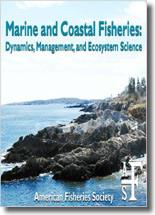The black sea bass Centropristis striata is a commercially important perciform fish with a general distribution along the U.S. Atlantic coast from Cape Cod, Massachusetts, to Cape Canaveral, Florida, and in the Gulf of Mexico from Mobile Bay, Alabama, to Tampa Bay, Florida. Currently, black sea bass are managed as three separate stocks: one in the Gulf of Mexico and two along the U.S. Atlantic coast. Fish from the Gulf of Mexico represent a separate sub-species, C. striata melana. The Atlantic subspecies, C. striata striata, is divided into two management units (separated at Cape Hatteras, North Carolina) based on the hypothesis that this subspecies comprises two distinct populations exhibiting life history and morphometric differences. To further investigate this differentiation, we employed mitochondrial sequence data to test whether genetic differences are observed among the three managements units. The DNA sequence analysis revealed a significant amount of genetic variability partitioned among samples from the three management areas. Similar results were observed when the analyses were confined to the two Atlantic coast management units. These results support the designation of two distinct management units for black sea bass along the U.S. Atlantic coast.
How to translate text using browser tools
1 June 2012
Genetic Management of Black Sea Bass: Influence of Biogeographic Barriers on Population Structure
E. M. Roy





